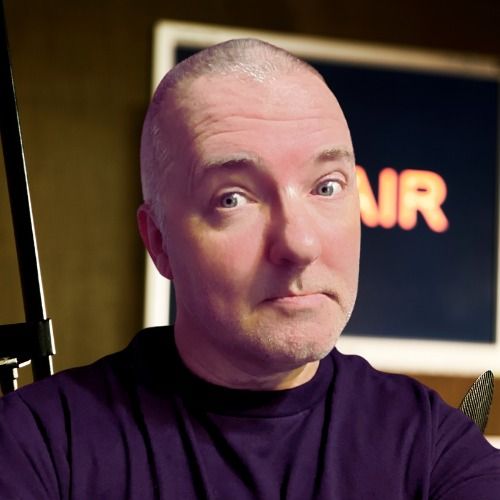Episode 67
Why Good Mic Technique is Key to Your Podcast Audio
There are two ways to ensure you get great podcast audio every time. The first is sound treating your room. The second is even easier, and costs nothing, and that's having good mic technique.
Additional reading and listening:
Products I Use for One Minute Podcast Tips
Note: these contain affiliate links, so I may get a small percentage of any product you buy/use when using my link.
My equipment:
- Shure SM7B dynamic mic
- TZ Audio Stellar X2 condenser mic
- Rodecaster Pro II audio production studio
- Sony MDR-7506 Studio Monitor Headphones
- JOBY Wavo Boom Arm
- Elgato Wave Mic Arm Low Profile
Recommended resources:
Leave a review:
Mentioned in this episode:
Join the One Minute Podders membership for exclusive perks!
You're a serious indie podcaster looking to go beyond the one minute tips offered in each episode. You want to connect with like-minded podcasters as well as ask your own specific questions. Perfect - the One Minute Podders membership is just for you, with invite-only monthly live streams, early access to episodes 48 hours before anyone else, and a link to your podcast in the show notes.
Support One Minute Podcast Tips
Recommend the show
Help your friends and other podcasters discover One Minute Podcast Tips, by sharing/recommending this episode and/or the show with them!
This podcast uses the following third-party services for analysis:
OP3 - https://op3.dev/privacy
Transcript
(upbeat music)
Speaker:I'm Danny Brown,
Speaker:and you're listening to One Minute Podcast Tips,
Speaker:the show that helps you be a better podcaster
Speaker:in just a minute a week.
Speaker:If you want more specific tips just for you in your podcast,
Speaker:check out the Magic Mic membership
Speaker:at oneminutepodcasttips.com/support.
Speaker:And now, this week's episode.
Speaker:(upbeat music)
Speaker:When it comes to the audio of your podcast,
Speaker:there are two ways to make the sound
Speaker:as good as it can be every time.
Speaker:The first is the treatment of your room, and I've spoken before about that in a previous episode, and I'll link to that in the show notes so you can check it out.
Speaker:But your mic technique is equally important.
Speaker:Now mic technique, as the name suggests, is the technique you use to speak into the microphone.
Speaker:And this is really important to make sure a) the sound is consistent and b) the quality is really good.
Speaker:So here are two examples of why mic technique is good, whether you use a condenser microphone or a dynamic one.
Speaker:The first one is plosives.
Speaker:Plosives are the hard P and B sounds you often hear where someone is speaking too close to the mic and directly into it.
Speaker:So I'm using a condenser microphone at the moment.
Speaker:It's at an angle to the side of my face.
Speaker:So instead of speaking directly into the mic,
Speaker:I'm speaking across it.
Speaker:So at the moment, if I said,
Speaker:Peter Pepper picked a pickled pepper,
Speaker:hopefully you shouldn't hear too many of the P sounds
Speaker:being really harsh.
Speaker:If I turn around and speak directly into the microphone,
Speaker:Peter Pepper picked a pickled pepper,
Speaker:Peter Pepper picked a pickled pepper,
Speaker:you can probably hear the P's being really aggressive.
Speaker:So the direction of the microphone is really important.
Speaker:Sticking with a condenser,
Speaker:you need to make sure you're in a steady,
Speaker:consistent seating position.
Speaker:So for example, right now, the distance of my mouth to the microphone is a hang loose
Speaker:sign using your hand.
Speaker:Basically that's where you extend your thumb and your pinky or your little finger and put
Speaker:them as far apart from each other as you can.
Speaker:That distance is the ideal distance for mouth to condenser mic.
Speaker:If I sit back a little bit now.
Speaker:So now I'm about 10 inches away from the microphone, 10 to 12 inches maybe.
Speaker:And you can probably hear that the volume's gone down quite a bit until I come back in
Speaker:to that sitting position that I had before.
Speaker:It's the same if I just turn my head and look about the room.
Speaker:You can probably hear, even though I'm at the same distance as before, because I'm moving
Speaker:my head around, the vocals have gone all over the place. So it's really important you keep
Speaker:a steady position from the microphone. Dynamic mics are a little bit more forgiving, so let's
Speaker:switch over to one now. So now we're on a dynamic. I'm actually a lot closer to the
Speaker:microphone as well, I'm about 2 inches away from the microphone now. But once again, it's
Speaker:pointed at an angle to my face, as opposed to straight in front of me and I'm speaking
Speaker:across the microphone. So if I say "Peter Pepper picked a pickled pepper", "Peter Pepper
Speaker:picked a pickled pepper", hopefully the P shouldn't be too harsh on you. As opposed to turning
Speaker:directly into the mic. Peter Piper picked a pickled pepper, Peter Piper picked a
Speaker:pickled pepper. You can hear how harsh the P sounds are. Now if I do the same as before
Speaker:and adjust my seating position, it's not quite as dramatic as the condenser mic. I'm about
Speaker:10-12 inches away from this microphone and if I come back in and start looking around
Speaker:the room and move my head to look about, you can probably hear the vocal tone change a
Speaker:bit but the difference in volume isn't quite as dramatic as the condenser mic. So hopefully
Speaker:that shows you why mic technique is so important. Get your mic technique right, get your room treated,
Speaker:and you'll have amazing audio every time.
Speaker:Until the next time, happy podcasting.
Speaker:(upbeat music)
Speaker:Thanks for listening.
Speaker:If you enjoy One Minute Podcast tips,
Speaker:be sure to share with your friends and other podcasters
Speaker:so they can enjoy it too.
Speaker:Until the next time, happy podcasting.
Speaker:(upbeat music)
Speaker:[MUSIC PLAYING]






